
views
X
Research source
Freezing fresh basil allows you to keep it on hand for your favorite recipes all year round. To freeze basil, blanch the leaves, flash freeze them separately, then combine and freeze them long-term in an airtight, freezer-safe container. If you don't need to preserve individual leaves, you can also freeze basil without blanching and flash freezing it, or you can freeze basil in puréed form.
Freezing Fresh Basil

Remove all of the leaves from the stems. You can clip or pinch the leaves away from the stems.
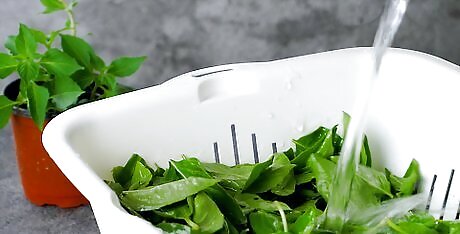
Thoroughly rinse the leaves in cold water. Use a salad spinner to do the job more effectively. If you don't have one, washing the leaves in a bowl of water and using paper towels to dry them will work too.

Place some ice in a bowl of cold water.
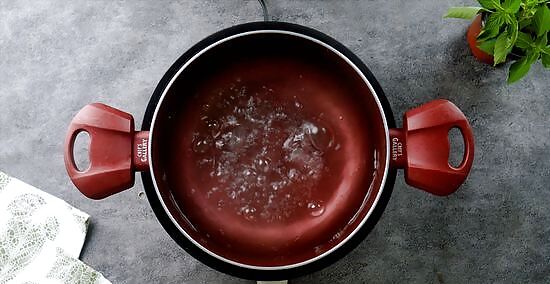
Boil a pot of water. It should be big enough to hold the basil leaves.
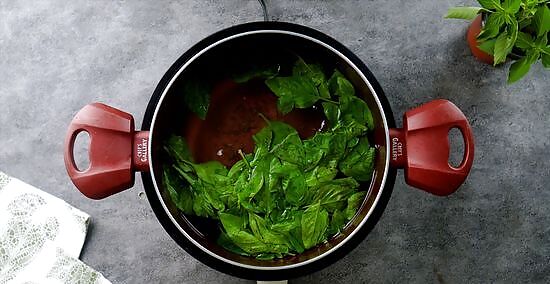
Add the basil leaves to the water and blanch them for 5-10 seconds. Be very vigilant to make sure you don't blanch them for longer than this. Move the pot to a different burner so it cools off as quickly as possible.
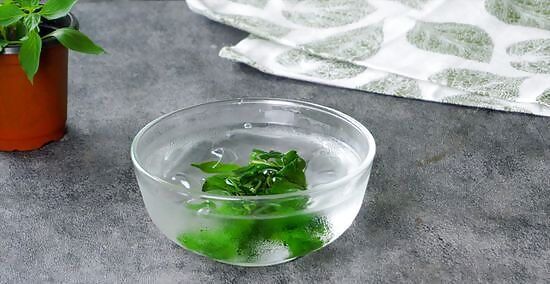
Place the leaves into the ice water using a slotted spoon. Do this as quickly as you can so that the basil stops cooking.
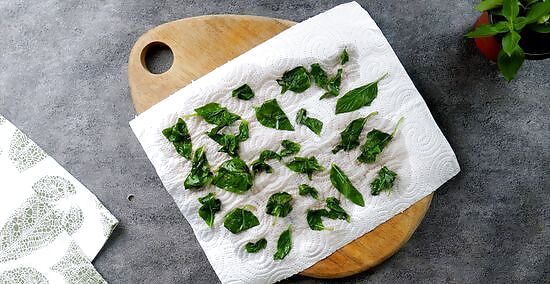
Lay the leaves on a paper towel. This is the part that takes the longest, so be patient. Just use your hands to individually lay out each leaf and then use a paper towel to pat them dry. You can let the leaves dry for 5-10 minutes if you like.

Place the leaves on cookie sheets or plates. Lay them out individually so they don't touch each other too much. You may find that you have to use two pans lined with cookie sheets.

Flash freeze the leaves. Place the cookie sheets with the leaves in the freezer and wait until the leaves are fully frozen. Then, remove them from the freezer.
Place the leaves in a container. You can use a zip-lock bag, Tupperware, an empty milk carton, or another container that you can seal easily.
Quickly Freezing Fresh Basil

Clip the leaves from the stems.
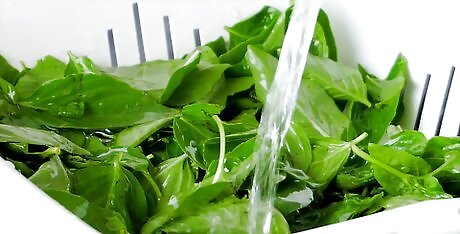
Rinse the leaves thoroughly.

Spread them on a surface and air dry them for at least 30 minutes. You can just use the counter, a cookie sheet, or a plate. You can use a paper towel to pat them dry to speed up the process.
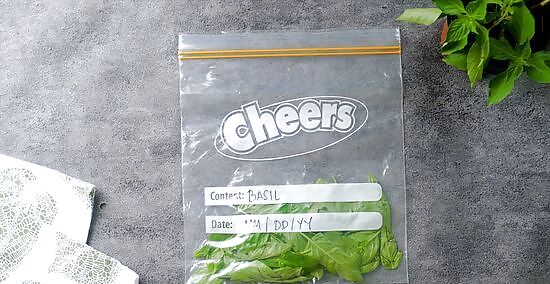
Place them in a storage bag. You can loosely layer the leaves in the bag, making sure that they are fully dry so they don't stick together. A zip-lock bag, Tupperware, or any container with a seal will do.
Freezing Puréed Basil
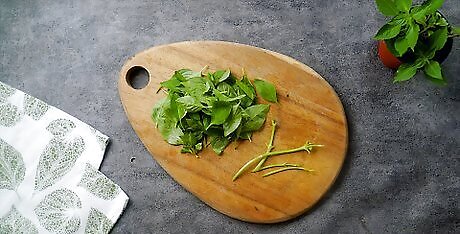
Pinch or snip off each basil leaf and discard the stems. You won't need the stems when you freeze the basil. If you harvest basil from your garden during the middle of the growing season, snip or pinch off the top 5 or 6” (12.7 to 15.2 cm) so that you leave some stems and leaves to keep on maturing.
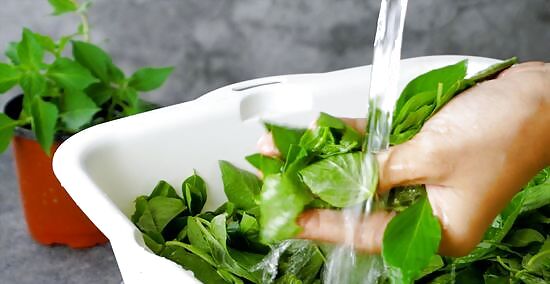
Rinse the basil under cold, running water. You can also put the basil in a bowl of cold water and let it soak. Drain the water from the basil. Put the basil in a colander and let it drain thoroughly. Gently pat the basil dry with paper towels. Basil is fragile, so pat the leaves gently or let them rest nestled between paper towels until they are dry.
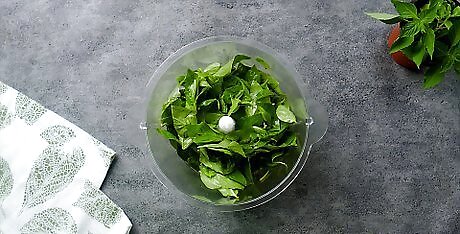
Place 1- 2 handfuls of basil in your food processor. Fill up the food processor bowl, but don’t pack the leaves too tightly.

Use the “pulse” setting to chop the basil. This will result in coarsely chopped leaves; if you want to make a paste, use the manufacturer's suggested setting on your food processor. This should only take a few seconds. The more finely you want to chop the basil, the longer you should process it.
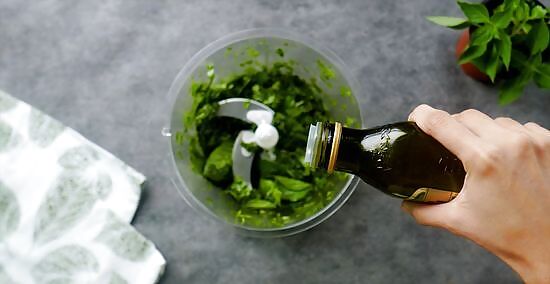
Drizzle olive oil over the basil while you are chopping it. Olive oil prevents the basil from turning dark or even black when it is frozen and gives it a richer flavor. You should use about 2-3 tablespoons of olive oil for each batch of basil. Using olive oil is optional. If you'd like to skip it but still freeze the basil in ice cube trays, you can add enough water to form a slush in the processor instead.
Spoon the chopped basil into freezer containers or ice cube trays. If you use ice trays, you can transfer the basil cubes to larger containers after freezing them for 12 hours.
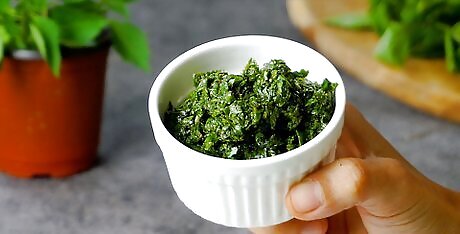
Use your frozen basil. You can leave them in the freezer for months and take them out and use them for recipes whenever you like, especially in the winter months. They'll separate from each other easily so you won't have to pull them apart. If you're putting them into a heated dish, then just throw in the frozen leaves and wait for them to thaw -- you won't have to thaw them on your own. If you have too much frozen basil, give it away to your friends -- they'll love you for it.



















Comments
0 comment